Assessing the interaction of various factors with shrimp behavior in its culture environment
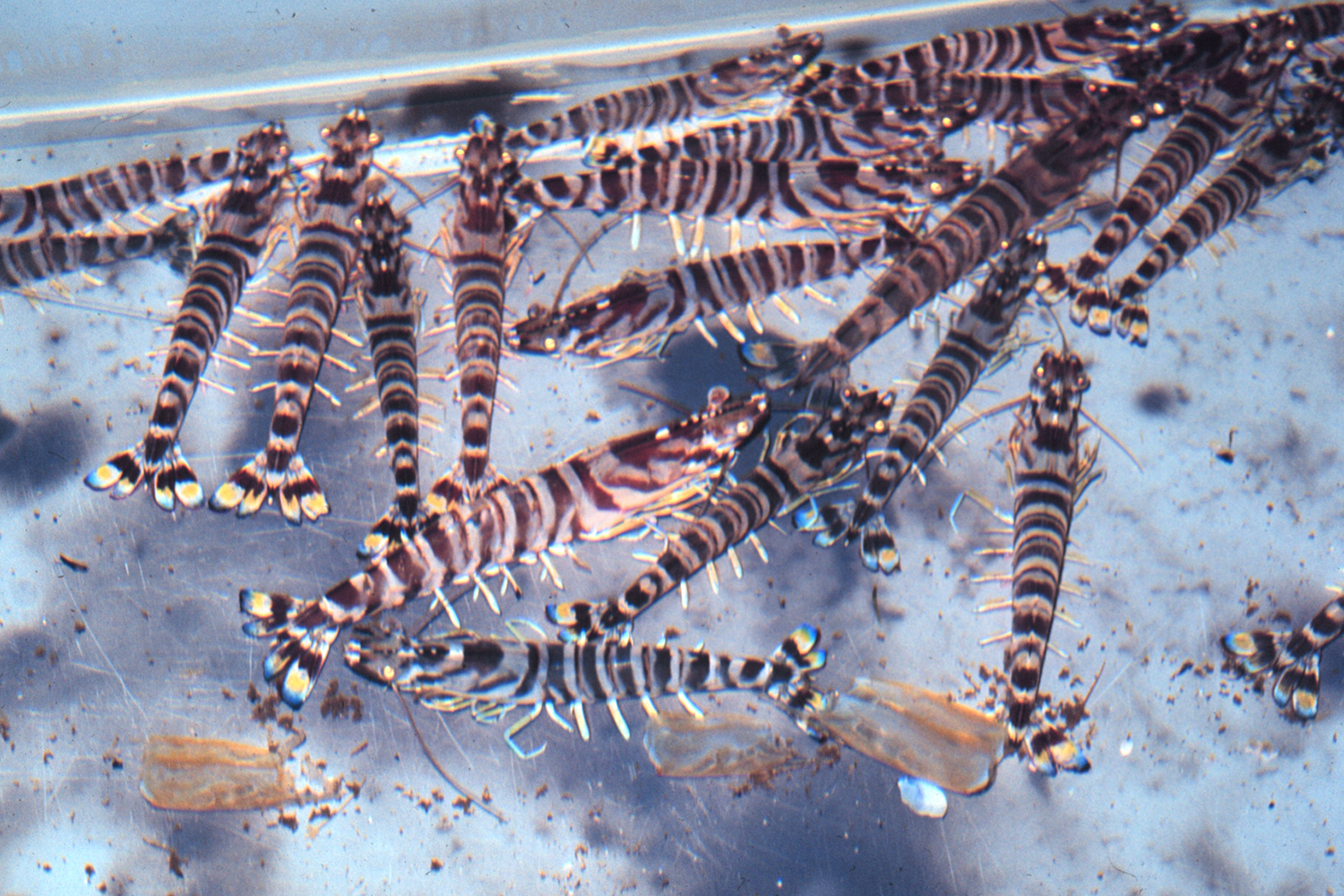
The Kuruma prawn [Penaeus (Marsupenaeus) japonicus) is cultured in China, Australia, the Philippines and Japan, generally extensively in outdoor ponds. The practice has also developed in highly intensive indoor culture systems to meet its growing global demand.
Shrimp behavior is affected by a variety of factors, which could be grouped into three effects: Individual-level effects, water quality effects and environmental effects. Individual-level effects include a variety of factors, including sex, molting, starvation and others. Water quality is one of the most crucial and fundamental factors in the culture of marine shrimp and it influences molting, feeding and various behaviors. The environmental effects cover environmental enrichment, stocking density and the photoperiod.
Stocking density is another critical aspect of aquaculture production and is linked to one of the environmental effects on shrimp behavior. Shrimp development and survival will be impacted by the increased unfavorable behavior in high-density environments, such as cannibalism. Another prominent environmental factor is light conditions, with vital significance on both behavior and physiology in the aquaculture of crustaceans. Light conditions may be the most determinative element in the locomotor activity of shrimp. For instance, P. japonicus is nocturnally active, and captive animals are typically fed after sunset, which is closely correlated to the intensity of light available.
This article – adapted and summarized from the original publication (Cheng, W. et al. 2022. The Multiple Influences of Natural Farming Environment on the Cultured Population Behavior of Kuruma Prawn, Penaeus japonicus. Animals 2022, 12(23), 3383) – examined the behavioral patterns of P. japonicus and the effects of factors on that behavior in farms to provide managers with a reference for shrimp culture management strategies.
Study setup
Most studies on the behavior of shrimp have been carried out in laboratories and concentrated on a single factor, with a lack of multiple-influence analysis of the natural farming environment on shrimp behavior. In our study, we quantified the sex ratio, dissolved oxygen, pH, salinity, density and light intensity as individual-level, water quality and environmental effects on the behavior of Kuruma prawns, or P. japonicus. We divided and studied shrimp behavior in four patterns: swimming in the water, crawling on the sand, resting on the sand, and hiding in the sand; and the relationship between multiple factors and behavioral patterns was analyzed.
The study was carried out at a commercial shrimp farm in the Province of Fujian, China. Thirty 9-month-old P. japonicus shrimp (95.59 ± 8.38 mm and 10.81 ± 2.26 grams) were randomly selected and females and males of comparable size were separated into two all-male ponds and two all-female ponds. Before the experiment, the remaining female and male shrimp were placed in three ponds at a ratio of 1:1 and reared for one week. The densities of the three mixed ponds were 12, 12 and 16.6 shrimp per square meter. Two all-male ponds were stocked at 16 and 17.6 animals per square meter, and two all-female ponds at densities of 16.6 shrimp per square meter. The seven pond bottoms were lined with the same grain size (1–1.5 mm) sand beds (5–8 cm deep). All pond water was exchanged by one-third daily using filtered seawater, and aeration provided throughout the experiment.
For detailed information on the experimental design, ponds used and animal husbandry; data collection and statistical analyses, refer to the original publication.
Results and discussion
This is the first report investigating the behavior of P. japonicus in a natural farming environment. We determined that P. japonicus exhibited a significant circadian rhythm and a preference for solitude in a sand-filled aquaculture pond. Kuruma prawns, as well as other penaeid shrimp, have been shown to rest during the day and emerge from the pond sediments at night to search for food. An average of 90.45 percent of the animals preferred to hide in the sand or rest on the sand’s surface. We believe that P. japonicus is less active in comparison to other burrowing shrimp species.
Our study also demonstrated the significant impact of the ratio of females to males in shrimp ponds on the behavior of P. japonicus. Significant differences in the hiding and resting behavior were shown between mixed and all-female or all-male shrimp ponds, indicating that sex ratios may influence the shrimp community and social behavior patterns, as revealed in resting and submerged-sand behavior. Penaeid shrimp females are often larger than males in body size due to a greater gain in mass at each molting cycle, as the mixed-sex cultures and male mono-sex cultures both grow more slowly compared to female mono-sex cultures, according to other researchers working with black tiger shrimp (Penaeus monodon) and Pacific white shrimp (Litopenaeus vannamei).
Based on our data, the resting, concealing and crawling behaviors of P. japonicus differed considerably between all-male and all-female ponds, as all-female shrimp favored lying or crawling on the sand while all-male shrimp favored hiding in it. Some factors could explain these behaviors.
Despite the more prominent aggression of male shrimp compared to their female counterparts, male shrimp may be more fearful and prefer to penetrate the sand rather than engage in combat with other male shrimp in a pond, as burrowing behavior is a crucial defense mechanism. Female shrimp may be less aggressive but more courageous compared to male shrimp. As a result, there could be more shrimp hiding in the sand in the all-male pond compared to the all-female pond. In addition, due to the increased activity of female shrimp on the surface of the sand compared to the male shrimp, the probability of shrimp capturing food in the male pond was lower. This could explain the lower growing rate of male mono-sex cultures compared to female mono-sex cultures.
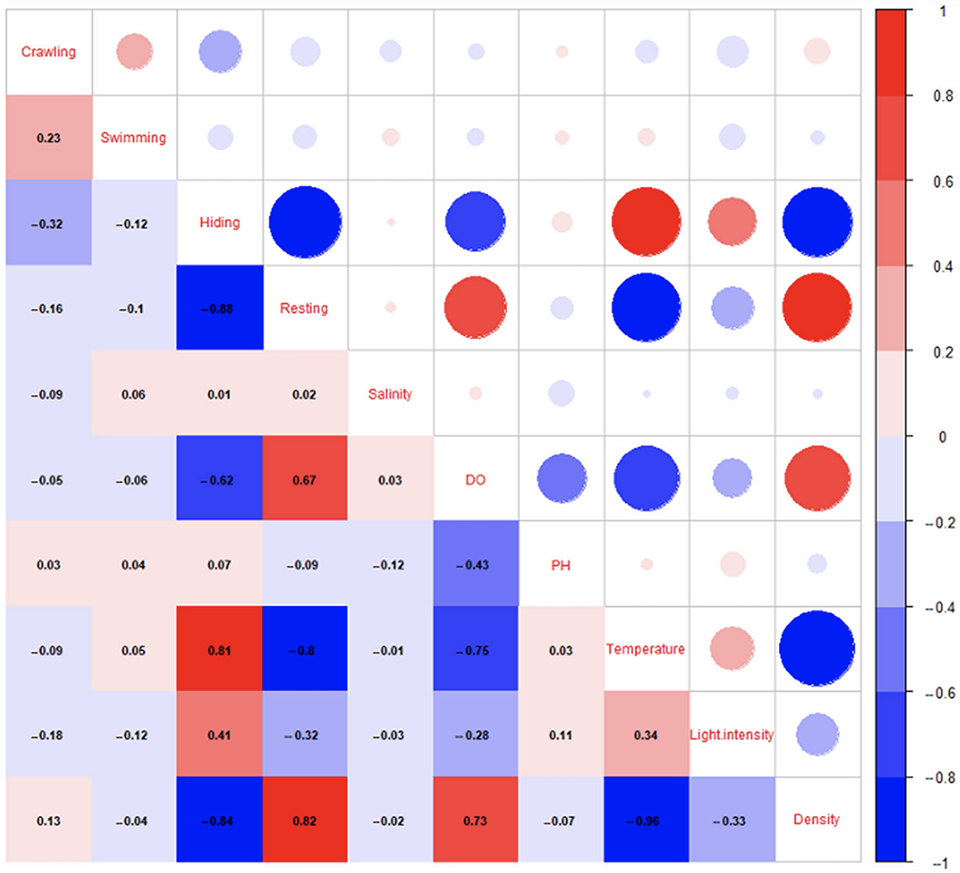
Adequate water quality is essential for the proper functioning of animals and for shrimp aquaculture to run normally. Our research is the first to explore the combined effects of temperature, pH, dissolved oxygen and salinity on P. japonicus behavior rather than a single water-quality factor. In terms of shrimp resting and concealing behavior in farms, temperature and DO exert a substantial impact, in which a negative link was found between temperature and the percentage of shrimp resting on the sand and a positive link was found between temperature and the percentage of shrimp hiding in the sand, and dissolved oxygen exhibited the reverse pattern. Temperatures that are too high and low dissolved oxygen levels are an uncomfortable environment where P. japonicus is cultured, so the animals may choose to stay in the sand rather than on the sand’s surface or in the water.
As reported by several researchers, crustaceans cultured in low-pH environments exhibit much decreased antennular flicking, which, in turn, reduces the locomotor activity; and salinity below 10 ppt can increase the locomotor activity of other penaeid shrimp. In our trial, salinity and pH did not significantly affect shrimp behavior. However, we believe further research is required to better comprehend how pH and salinity affect prawn behavior in farms.
Stocking density is another crucial factor and in our study, it was observed to be negatively related to the percentage of concealing behavior and positively related to the percentage of resting behavior. Decreased swimming behavior in other penaeid species has been observed at lower stocking densities compared to higher stocking densities, which is inconsistent with the findings of our research. P. japonicus may choose to rest on the sand as a defense strategy, which could explain why shrimp in ponds with higher densities tended to rest on the sand’s surface, where shrimp are more aroused by chemicals, tactile, or visual interference from other people, increasing the pressure exerted on shrimp to obtain food.
Our results are also in agreement with those of other scientists that shrimp locomotor activity was most likely influenced by light conditions, which might be the most critical single factor in this behavior. Light showed the most prominent impact on the occurrence of swimming behavior, in addition to a linear connection with the hiding and resting behavior of the shrimp. It would be productive to further investigate the specific causes of this behavior transformation due to light, which may be connected to their biological clock. The effect of light intensity on shrimp locomotor behavior is likely to be a reflection of circadian behavior. Further experiments are required to distinguish between the effects of light and rhythm on the locomotor behavior of shrimp.
Perspectives
Kuruma prawns (P. japonicus) showed a distinct diurnal rhythm and a preference for tranquility in a sand-filled aquaculture pond. The sex ratio of P. japonicus in the pond is a significant factor in altering the behavioral patterns of shrimp. In cultivation, temperature and dissolved oxygen exerted a more prominent influence on shrimp behavior compared to salinity and pH.
Density will considerably impact the P. japonicus hiding and resting patterns. In our study, light intensity played the most unique and crucial role in shaping P. japonicus behavior, which, in turn, significantly influences its resting and hiding behavior, accompanied by the likelihood that the shrimp will engage in swimming behavior.
These observations of P. japonicus in culture ponds demonstrate the significance of manipulating light intensity and management variations in density in a natural farming environment.
Now that you've reached the end of the article ...
… please consider supporting GSA’s mission to advance responsible seafood practices through education, advocacy and third-party assurances. The Advocate aims to document the evolution of responsible seafood practices and share the expansive knowledge of our vast network of contributors.
By becoming a Global Seafood Alliance member, you’re ensuring that all of the pre-competitive work we do through member benefits, resources and events can continue. Individual membership costs just $50 a year.
Not a GSA member? Join us.
Author
-
Dr. Xiangrong Liu
Corresponding author
Department of Computer Science, Xiamen University, Xiamen 361102, China[110,99,46,117,100,101,46,117,109,120,64,117,105,108,114,120]
Tagged With
Related Posts
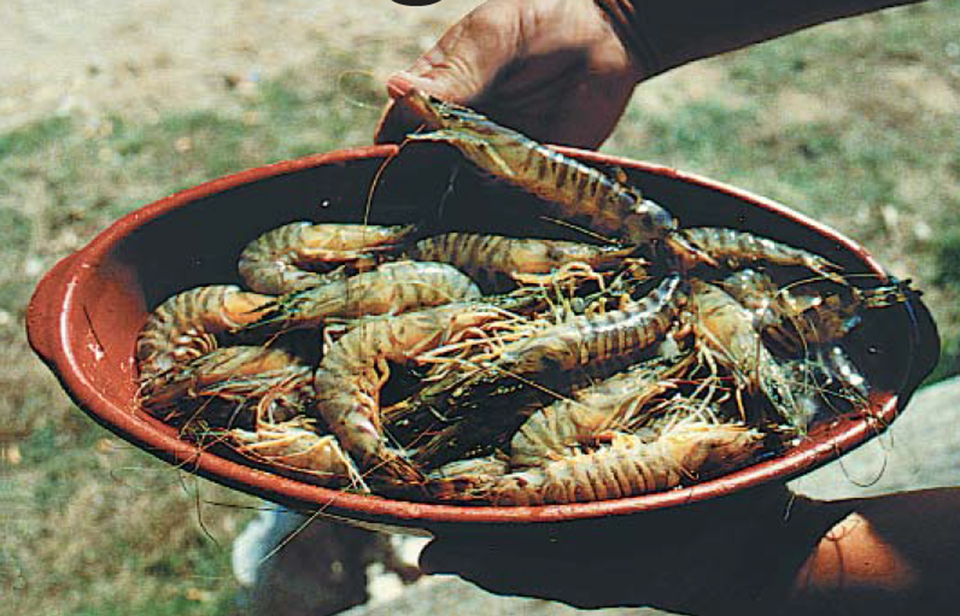
Intelligence
Farming kuruma shrimp in Japan
Kuruma shrimp (Penaeus japonicus) are produced on a small scale. This species can tolerate transportation over long distances and without water.
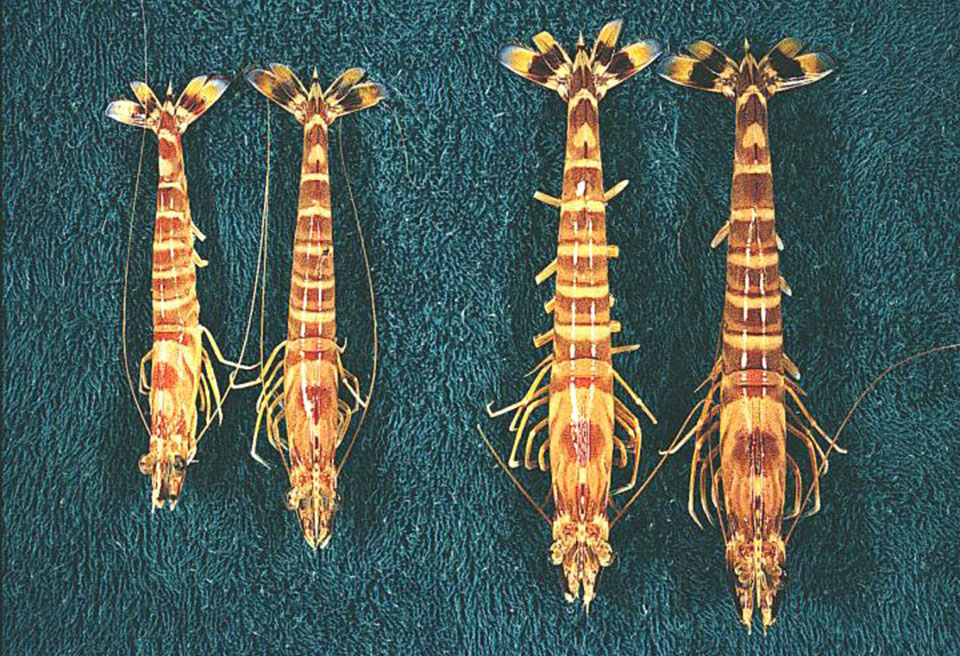
Health & Welfare
Linking mapping for Kuruma prawns
Domestication and genetic improvement of the Kuruma prawn (Penaeus japonicus) have been relatively slow due to availability of broodstock and postlarvae.
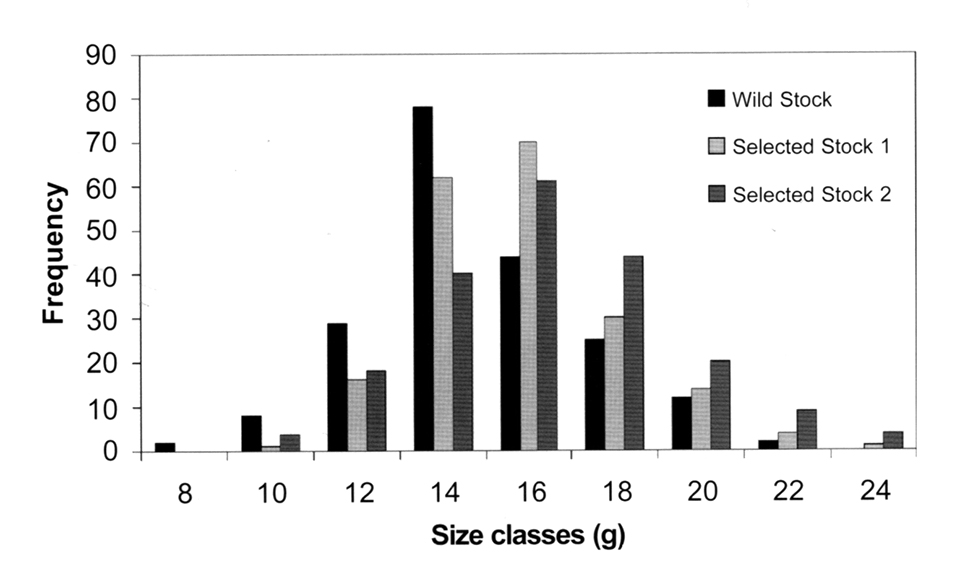
Intelligence
Genetic improvement of farmed prawns in Australia
The domestication and genetic improvement of farmed prawns has been slow compared to that of some other aquatic species and most terrestrial livestock.
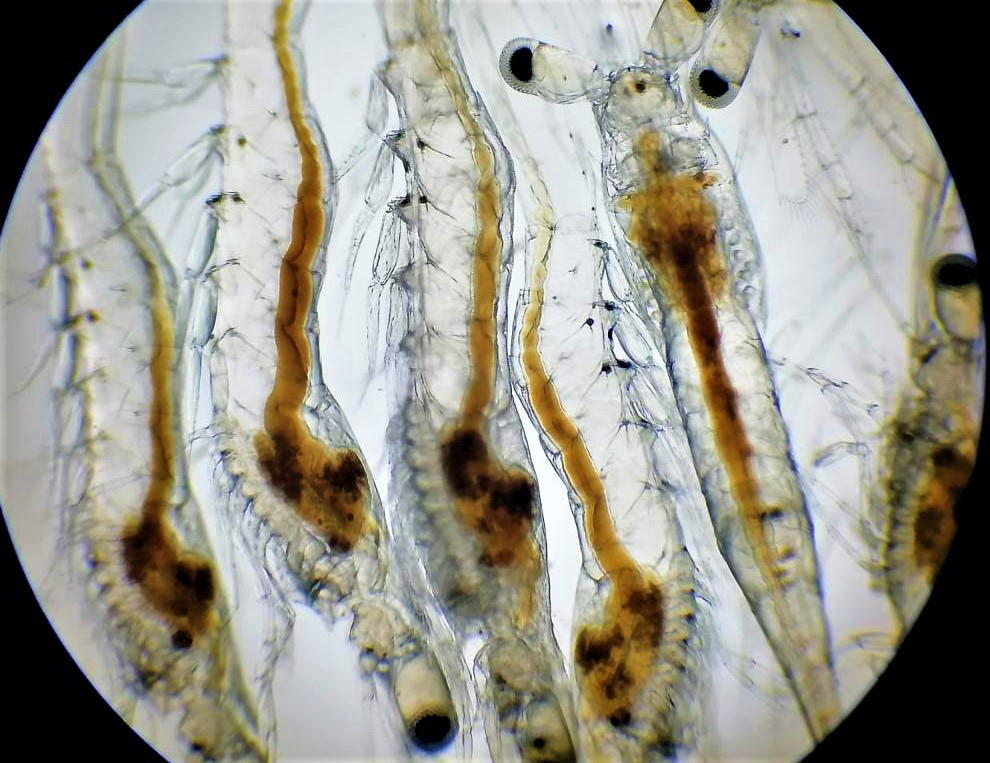
Health & Welfare
Metabolically active Vibrio in postlarval shrimp digestive tracts
The occurrence and abundance of Vibrio populations impact the bacterial composition of L. vannamei shrimp during post-larval development.



